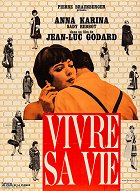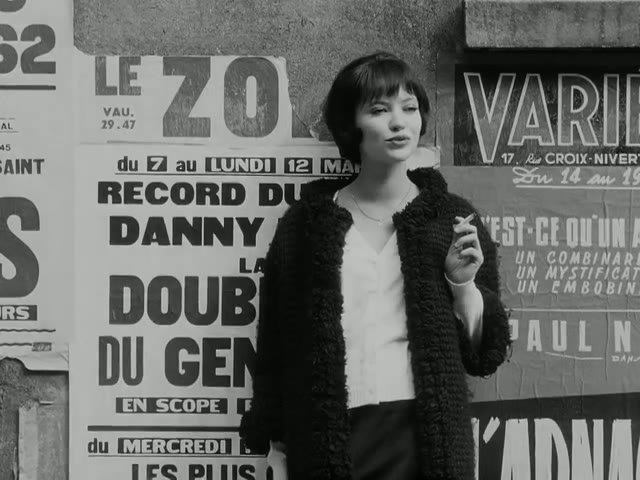Regie:
Jean-Luc GodardDrehbuch:
Jean-Luc GodardKamera:
Raoul CoutardMusik:
Michel LegrandBesetzung:
Anna Karina, Paul Pavel, Sady Rebbot, Peter Kassovitz, Jean-Luc Godard, Jean-Paul Savignac, Henri Attal, Gérard Hoffman, André S. Labarthe (mehr)Inhalte(1)
Eine junge Frau wird Prostituierte, weil sie die Miete nicht mehr bezahlen kann, und findet bei einem Streit unter Zuhältern den Tod. Der durch Zwischentitel in zwölf Kapitel gegliederte Film ist Godards erster Versuch, die bislang übliche Film-Erzählung durch einen Film-Essay zu ersetzen. (Verleiher-Text)
Kritiken (3)
My Life to Live is like browsing through a book that Godard had written during the time when it was still possible to understand him. At the start of each of the twelve chapters, which break the film up into several episodes, we are briefly informed, as in some novels, of what we have look forward to. A compact, graduated drama is logically not the order of the day. “How” becomes more important than “what”. Though each chapter is slightly different (due to editing, the length of shots, lighting, space left for the text, mood), Anna Karina connects all of them together through the ambiguous (is she a user or is she used?) role of a young woman who would like to believe that she knows how to live her life in a meaningful way. Her spontaneity and playfulness and that of My Life to Live as a whole defy any effort toward rational analysis. It’s just necessary to watch and enjoy. 80%
()
This was my very first encounter with the French director Jean-Luc Godard and immediately it was absolutely brutal and carnal. The director doesn’t actually narrate the story in the usual way. He shows it in a few chapters, which are divided into a few scenes. Each one is named and each has its own premise and essence. Some moments are better, others are worse, but if it weren’t for the finale, my rating probably wouldn’t be so good.
()
The form is more interesting to me here than what the film is trying to say. The chapter layout of the film is still a relatively unique and not so common element even today. In addition, the inclusion of other works and elements that are not so often seen in films (such as writing a letter) only further accentuates the specific approach to the film.
()

